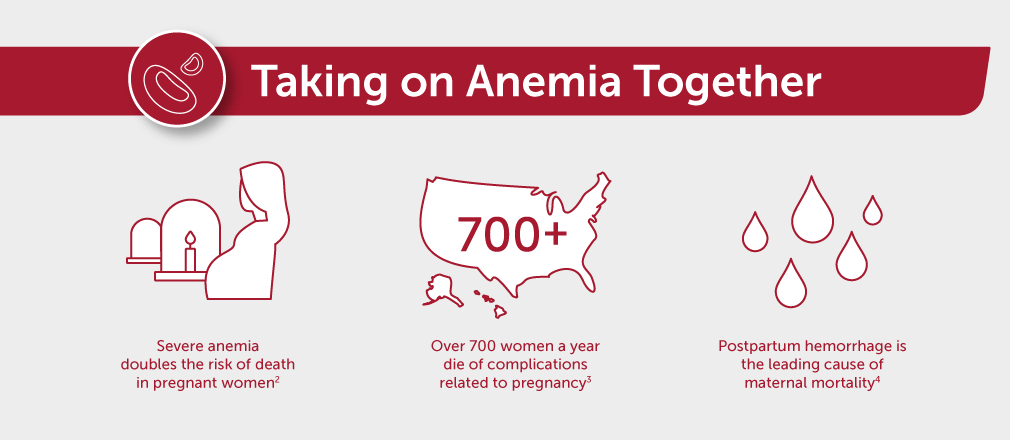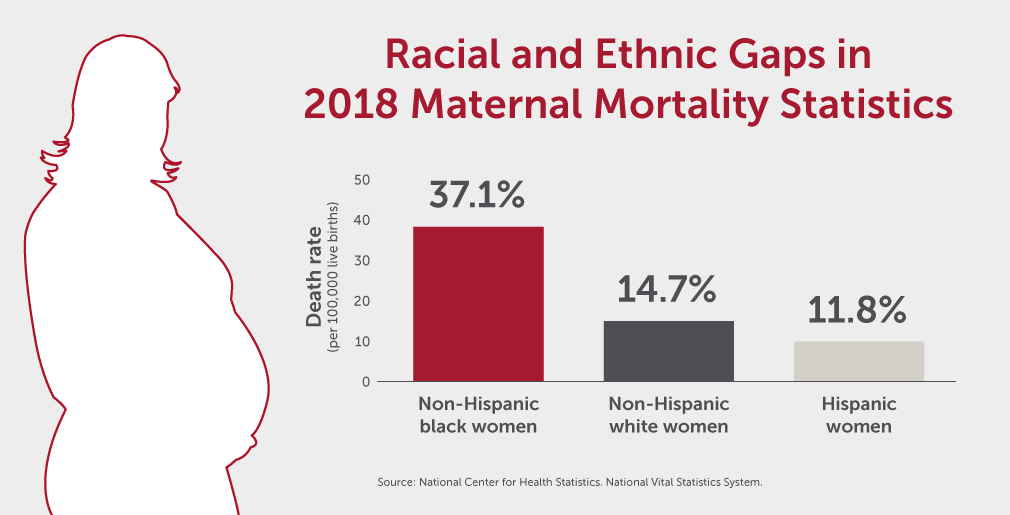It’s Time to Screen Out Anemia for Pregnant Women
Protecting the health of pregnant women and their new babies is something we are very passionate about at HemoCue, especially given the shocking maternal mortality rate here in the United States. The U.S. maternal mortality rate ranks 55th globally based on the World Health Organization’s rankings.


It’s Time to Screen Out Anemia for Pregnant Women
October 30, 2020
.
Protecting the health of pregnant women and their new babies is something we are very passionate about at HemoCue, especially given the shocking maternal mortality rate here in the United States. The U.S. maternal mortality rate ranks 55th globally based on the World Health Organization’s rankings.1 And if you narrow the field to 10 countries of similar standing, such as Germany, the U.S. ranks last.2
Many factors contribute to this problem. Anemia screening is one factor that directly affects maternal mortality in the U.S., and it's something we can address immediately.
Anemia and its Impact on Pregnant Women
Severe anemia is a condition that doubles the risk of death in pregnant women.3 Anemia is a deficiency of hemoglobin, which carries oxygen throughout the body. Our bodies use iron to make hemoglobin.
During pregnancy, women need double the amount of iron that nonpregnant women need. This iron helps create the hemoglobin necessary to supply her baby with blood and oxygen. If the expectant mother is iron deficient, she can develop anemia over the course of her pregnancy.

Let’s look at a typical scenario for a newly pregnant woman with a low level of iron. Anita is tested for anemia during her first prenatal visit. Since she doesn’t yet have anemia, her hemoglobin is normal. As her pregnancy continues her need for iron grows, and her iron stores are diminished. The onset of anemia due to the iron deficiency causes her to become tired and lose her appetite, but she thinks this is just part of being pregnant.
Anita is now at high risk for postpartum hemorrhage and, in worst case, death. Her baby may also be impacted. She can be born prematurely and have a very low birth weight.
Anemia and Postpartum Hemorrhage
Globally, postpartum hemorrhage is the leading cause of maternal mortality, and there is evidence that anemia is directly linked to postpartum hemorrhage.4 The more severe the anemia, the more severe the bleeding.
With such clear and abundant evidence, why isn’t anemia in pregnant women taken more seriously? According to a study by the Society for the Advancement of Blood Management (SABM), anemia is an epidemic, but it is widely under-recognized. This mindset leads to poor blood management practices for perioperative settings. In other words, if healthcare providers aren’t aware that their patients suffer from anemia, they can’t prepare for it by having the necessary blood resources on hand. The condition is often normalized and considered relatively harmless.5
Access to Care
Unfortunately, in the U.S., women of color and those in limited-access areas, including rural communities, have a higher risk of maternal mortality.6

.
These women need a way to protect themselves and their unborn babies. That’s where the National WIC Association (NWA) comes in. The NWA advocates for the Supplemental Nutrition Program for Women, Infants, and Children, commonly known as WIC. WIC is available to pregnant, postpartum, and breastfeeding women. The program includes screening for anemia to provide proper nutrition recommendations and healthcare referrals. WIC operates in 10,000 clinic sites in all 50 states, including 34 Indian Tribal Organizations, Washington DC, and five U.S. territories. HemoCue is proud to be a partner of the National WIC Association for over 25 years.
.
If you would like more information about HemoCue’s public health initiatives and hemoglobin testing solutions, please
General Inquiry
Please give us a few details and a representative will be in touch shortly.
Reference:
1 Martin, Nina. “The New U.S. Maternal Mortality Rate Fails to Capture Many Deaths.” ProPublica, 13 Feb. 2020, www.propublica.org/article/the-new-us-maternal-mortality-rate-fails-to-capture-many-deaths.
2 Laurie Zephyrin, M.D., and Eugene Declercq, Ph.D., "Measuring Maternal Mortality," To the Point (blog), Commonwealth Fund, Feb. 6, 2020. https://doi.org/10.26099/c14w-nq52
3 Young MF, 2018, Maternal anemia and risk of mortality: a call for action, The Lancet, viewed 24 April 2020, https://doi.org/10.1016/S2214-109X(18)30185-2
4 Kaima A. Frass, Postpartum hemorrhage is related to the hemoglobin levels at labor: Observational study, Alexandria Journal of Medicine, Volume 51, Issue 4, 2015, Pages 333-337, ISSN 2090-5068, https://doi.org/10.1016/j.ajme.2014.12.002.
5 Auerbach, Michael, et al. “EMERGING EVIDENCE ON ANEMIA - SABM.” Society for the Advancement of Blood Management, 2019, www.sabm.org/wp-content/uploads/2019/02/Emerging-Evidence-on-Anemia-V6-Final.pdf.
6 “NVSS - Maternal Mortality - Homepage.” Centers for Disease Control and Prevention, Centers for Disease Control and Prevention, 20 Nov. 2019, www.cdc.gov/nchs/maternal-mortality/.
Featured Profiles
Our new 'The Point of Care Campaign' is our way of showing appreciation to healthcare workers during COVID. Our profile this week features Mel Horne.
Related Articles
Introducing the HemoCue Customer Portal
